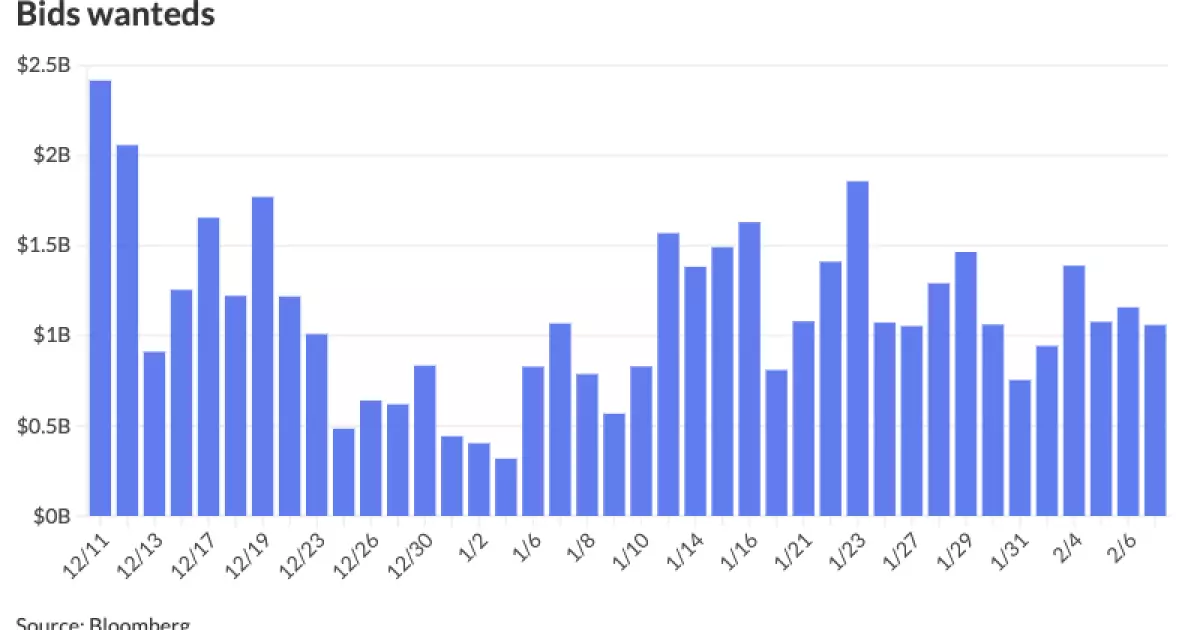The municipal bond sector has recently experienced volatility despite a steady start to the week. As investors navigate a complex landscape characterized by fluctuating interest rates and economic uncertainty, the dynamics within the municipal bond market are unfolding distinctly. This article will offer a comprehensive analysis of the current trends in municipal bonds, providing insights into performance metrics, investment strategies, and upcoming issuances.
The initial days of January have seen a mild rally in the municipal bond market, with gains reported at 0.43% since January’s outset, accumulating a year-to-date increase of 0.94%. This trajectory marks a notable rebound from December’s downturn, where municipals faced a decline of 1.46%. Jason Wong, the vice president at AmeriVet Securities, highlighted how this recovery is partially buoyed by waning economic uncertainties that had previously stifled investor confidence.
On a broader scale, the municipal market has been enjoying a resurgence, with participants cautiously optimistic about future performance. Portfolio manager Daryl Clements from AllianceBernstein remarked on how the setbacks of the previous month appear to be increasingly distant as market conditions improve. This sentiment seems to align with the reality that certain economic variables, previously volatile, are stabilizing, leading investors to re-evaluate their positions in the municipal bond market.
Despite the overall positive momentum observed at the beginning of the week, market activity among major financial players remained tepid. Dealers reported “limited activity” as investors showed constrained conviction stemming from economic fluctuations. However, as the week progressed, the incoming “manageable new issue calendar” combined with strong reinvestment cash provided the much-needed impetus for investors to re-engage. This influx is crucial as it supports a robust secondary market that benefits from heightened purchase and sale activities.
According to data from J.P. Morgan, dealer sales increased significantly—up by 26% in comparison to recent averages. Additionally, “bid wanteds” rose by 20%, signaling a scenario where investors were eager to refresh their portfolios and manage risk through smart trading strategies. The burgeoning active engagement among buyers and sellers reflects a growing confidence that could further stabilize and possibly invigorate the municipal bond market.
One of the fascinating aspects of the current market is the performance of municipal bonds relative to U.S. Treasuries (USTs). As of Monday, the two-year municipal to UST yield ratio was documented at approximately 61%, with longer maturities also exhibiting strong performance. This trend portrays how munis continue to outperform USTs, particularly within the shorter end of the maturity spectrum. Wong noted that this “richening” compared to USTs highlights the attractiveness of municipal bonds under current economic conditions.
Interestingly, long-duration municipal strategies have seen particular growth. Since the start of the year alone, long-end muni mutual funds accumulated around $2.8 billion in inflows, a clear sign that investors are gravitating toward these securities. The general shift towards longer maturities is reflective of both the current inversion of yield curves and the market expectations surrounding interest rates—a strategic move by investors seeking stability and yield.
Looking ahead, several significant new issuances are on the horizon that are expected to shape the municipal bond landscape in the coming weeks. The New York City Transitional Finance Authority plans to price $1.659 billion in tax-secured bonds, while the state of Hawaii is readying $852.235 million in airport system revenue bonds. These offerings will provide additional opportunities for investors who are keen to capitalize on the prevailing low-yield environment and enhance their portfolios.
Moreover, numerous local districts and authorities are slated to unveil their own bond issuances this week, including educational institutions and utility companies. These issuances reflect ongoing infrastructure investments and public sector projects that can stimulate both economic growth and job creation. The engagement from reputable underwriters like J.P. Morgan and Barclays underscores the strong demand for municipal finance in the current market climate.
As municipal bonds navigate the complex interplay of economic variables, investor behavior, and upcoming issuances, the market appears to be at a pivotal moment. The recent gains after December’s downturn reflect a market adjusting to new realities, and the substantial inflows into long-duration cohorts point toward renewed investor confidence. The continuing interaction between supply and demand, alongside strategic positioning by investors, will likely shape the market’s trajectory as it progresses through 2024. As conditions evolve, understanding the underlying trends in the municipal bond sector is essential for navigating investment opportunities effectively.

